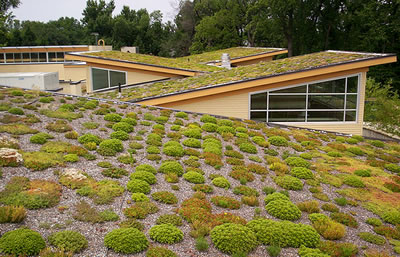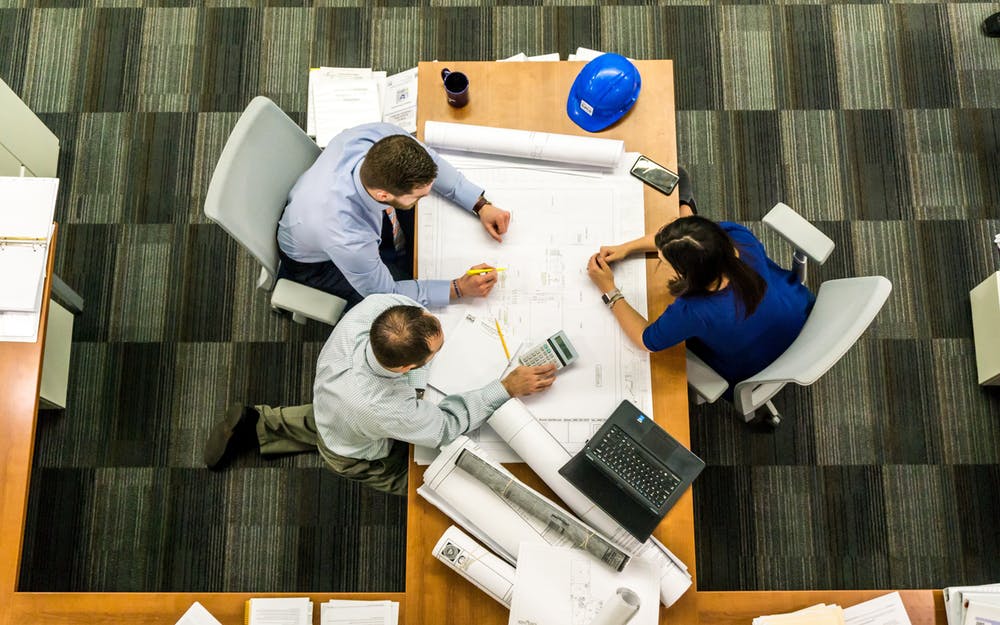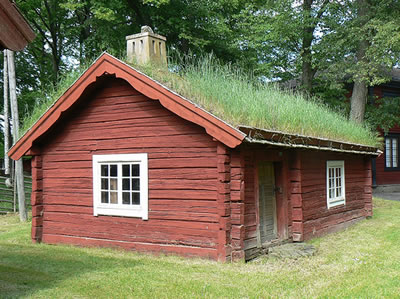Who would have thought that your roof could help you do your bit for the environment? Keeping us safe from the elements can also help to keep the elements safe from us. As we’re more and more aware of the negative effects we have on the world we live in, we have to look at every area of our industries and get creative with our solutions.
Going green with your roofing might be an option that you had overlooked, but in reality, it’s a great way to save you money, and reduce your carbon footprint at the same time! Find out how right now; keep reading for more information!
So Hot Right Now
As roofing material gets more and more advanced, there are some great options available that will save you money in the long term, and help the environment too.
Modern roofing membranes can today give you great insulating properties which benefits you, the householder, but also the world around you too.
Everyone knows that hot air rises, and as such, your roof plays a pivotal role in your gas and electricity consumption. The more heat you lose through your roof, the more you’ll use through your central heating system, electrical heaters or natural fires. All of these elements add up, and mean you’re contributing more than you should towards global warming and pollution.
However, you might be surprised to learn that according to research from The Wildlife Trust, keeping houses cool in the summer uses more energy than heating them up in the winter. Efficient energy use therefore is a year-round problem and something that fitting insulation plus modern and eco-friendly roofing can easily address.
Not for profit energy organisation, Ebico, have found that a property which isn’t insulated loses approximately a quarter of its energy through the roof. This results in carbon dioxide emissions increasing as your household consumption rises, during both the summer and winter months.
Replacing existing roofing felt with a membrane which is waterproof but vapour-permeable can be a quick way to increase the amount of space available for insulation, thereby increasing your energy efficiency. Switching from felt to a vapour-permeable membrane negates the need for a vapour barrier, freeing up 50mm of space which can be used to pack full of insulation instead.
Although insulation is effective in both keeping unwanted heat out in the summer but in during the winter, it won’t work properly if it gets wet. It doesn’t matter how thick your insulation is, if it is damp and soggy, it won’t be able to fulfil its purpose. It’s therefore essential to ensure your roof is properly waterproofed in order to maximise your energy-saving measures which in turn, will help to reduce your carbon footprint.
A truly green affair
Of course, whilst insulation, vapour-permeable membranes and a watertight roof will all help you reduce your energy consumption; there are further steps you can take if you want to adopt a truly green approach.
Few people like the look of the concrete jungle frequently seen in cities and urban areas so how about if you were able to transform your roof into a thing of beauty…which also delivered significant benefits to both you and the environment?
This is now a reality; you no longer have to choose between form and function.
Imagine a roof covered in greenery, a haven for wildlife in a landscape where their natural habitat in shrinking. A lush green oasis which delivers that little slice of nature that everyone craves but also can vastly improve your household’s energy efficiency too. This is the reality that green roofing offers.
All green roofing is comprised of several different layers; a waterproof membrane, insulation layer, drainage layer and a medium which supports plant life. Having an excellent waterproof and drainage layer is absolutely critical for this type of roofing; get it wrong, and you could end up with a soggy mess permeating your loft space!
There are different categories of green roofing depending on the structure it is being fitted onto, as well as the degree of maintenance available for its upkeep.
Intensive green roofing refers to the most high maintenance option and includes large plant life, full lawns – and sometimes even trees! There must be sufficient soil and on-going maintenance of a similar level of what you would expect for a regular garden.
Semi intensive green roofing doesn’t incorporate such a great level of greenery and foliage but will require some maintenance on an on-going basis.
The final option is known as extensive green roofing and rather than featuring heavy plants, it is comprised of several thinner layers. This gives the impression of rich vegetation – and certainly the energy efficient benefits too – but requires very little upkeep.
The types of plants and foliage used in green roofing are carefully selected to be particularly hardy, is unlikely to be affected by the ravages of the weather and requires little or no irrigation. Indigenous plants are often used to great effect.
Opting for green roofing will help your house to stay warm in the winter and cool in the summer as it offers one of the most effective forms of insulation you can find. But it can also help to protect your property and the surrounding area from the risk of localised flooding, a problem which is rapidly increasing in severity due to climate change. A green roof can absorb as much as 35% of rainfall during the winter months and 85% during the summer months, taking pressure off overloaded drainage and sewer systems on the ground.
Green roofing is green in every conceivable way: it provides shelter for wildlife that have been affected by urbanisation, increases the level of oxygen in the air, provides better insulation which in turn decreases carbon dioxide production and on top of all of that, is very easy on the eye too!
But if all of the above isn’t quite enough to convince you of the benefits to not just you, but also the environment, it’s worth comparing the longevity of a green roof to a conventional build. A green roof can extend the lifetime of materials by as much as 2-3 times its normal lifespan; 30-50 years is a reasonable expectation for this type of roofing.
Not only does this save you substantial money but it also helps the environment too. Less roofing means less manufacturing and less materials are required, just one more way in which the carbon footprint is reduced.
Conclusion
Helping the environment also means helping yourself. Investing in good roofing is much like global warming; it’s the investments now that will pay off for future generations in years to come. Long term thinking can benefit you, and your building. Going green with your roof can save you money, and help to save the world! Take advantage of the great roofing options available to you, and you could discover the amazing benefits they bring.
Image credits: Arlington county and Urbanists




